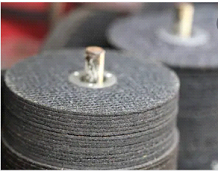Thin cutting wheels / Thin cutting discs
March 25, 2020
Thin cutting wheels became popular in early 2000’s. The demand was to finish jobs quicker or faster. The kind of tool and the tool guard that you use also are factors that play a role in the type of wheel that can be used for an application. A larger-diameter wheel works best if you’re cutting deep into metal or need to cut a piece with a large diameter, for example, because it eliminates the need to rock the wheel back and forth during the cutting process. Look for a wheel with the diameter designed for the size and thickness of material being cut.
Thin wheels, on the other hand, tend to remove less metal during the cut and have shorter life spans, but provide a quicker cut. There are some exceptions to this as different versions of thin wheels are lasting longer, so be sure to do your research before you make a final decision to ensure the wheel you select maximizes efficiency. Special cutting wheels are also available that are designed for use with certain materials, such as stainless steel and aluminum.


Remember, the thinner the cutting wheel, the more susceptible it can be to side loading, which is a term that describes when the wheel bends while moving side to side in the cut. This can turn dangerous if you lean too hard on a wheel, which can cause the wheel to break or jam in the cut. It can also reduce the efficiency of the wheel and increase the cut time.
User must apply the proper amount of pressure—not too much, not too little—to allow the cutting wheel to do the work. Always avoid pushing too hard on the wheel, which can cause the grinder to stall or kick back or give you a much less efficient cutting action. It also increases the chances that you will slip or lose control of the tool, which can cause damage or injury.

